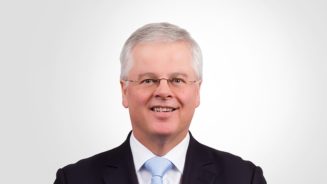Nuttall disagrees with analysts who believe investors are facing an era of economic stagnation and long-term low interest rates. He instead sees the current period as “a prolonged cyclical recovery from an unusually large economic shock”.
“We’re still in the expansion phase of the business cycle,” Nuttall told FSA. “It’s the longest of the phases within the business cycle and also the most fragile or volatile so you get a number of false readings.”
Despite a Q3 slowdown, the US has a healthy labour market, potential for the real estate side to contribute strongly and a lack of investment from capex, he said.
In 2017, Nuttall sees improving US economic growth, a slight slowdown for Europe and growth picking up in emerging markets.
"When we look back in 3-5 years’ time we’ll recognize we’ve seen a major inflection point in markets in 2016"
“It’s a moderately positive environment for risk assets.”
The firm is overweight risk assets, mainly global equities but also some medium term credit products. It has also been overweight EM currencies and debt, which offer attractive carry, and underweight developed market government rates and bond surrogate equities such as utilities.
However, the focus is on “buying when the market dips and taking profit judiciously on fast rallies”, he said.
Under-priced Fed action
In terms of investment risk, the last couple of years markets have focused on a hard landing in China and the financial system in Europe and at the beginning of the year, reports were suggesting a US recession by year’s end, he said.
Few analysts, however, are talking about further interest rate hikes after the one expected in December.
“The risks are what markets aren’t focused on. The market has now accepted the likelihood of a rate hike in December but further along the curve very little is priced-in in terms of fed action.”
Wage pressure has been slowly building in the US and if inflation flares, a significant repricing in rates is possible, which would be negative for risk assets, he said. “That’s not our central scenario. But the markets, particularly in the US, are under-pricing the likelihood.”
Back to fundamentals?
Nuttall also does not believe the common prediction that says interest rates will be lower for longer. As monetary policy shifts, low bond yields will improve. He believes the period of ongoing lower rates and more stimulus has passed.
Since the G-20 meeting in Shanghai in January, “markets have typically been disappointed in expectations of further easing in policy, particularly with the ECB and Japan. The switch will be from pure beneficiaries of ongoing liquidity injections to markets focused more on fundamentals.
“When we look back in 3-5 years’ time we’ll recognise we’ve seen a major inflection point in markets in 2016.”




